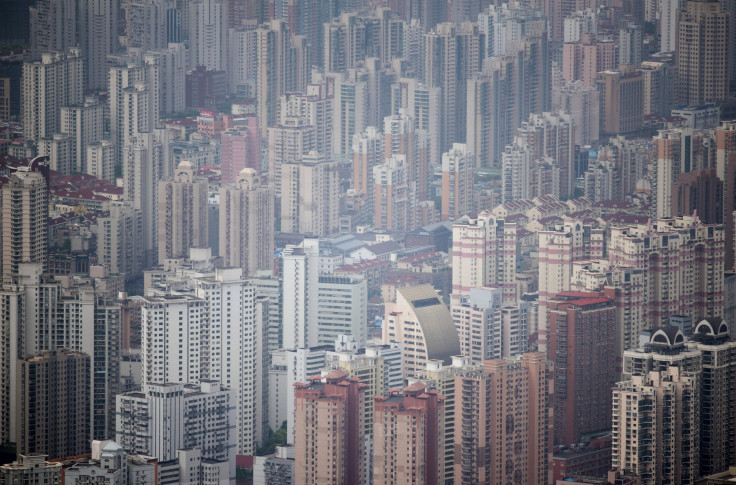China Real Estate Sector: More Cities See New Home Prices Rise In December, But National Picture Remains Mixed

SHANGHAI -- New house prices in a survey of China’s 70 biggest cities were up by 7.7. percent on average in December compared with a year earlier, according to official statistics. Nationally, prices rose 1.6 percent year on year, based on a Reuters survey, their third successive monthly increase.
Analysts said the data was a sign of a fledgling recovery in the property market, in a nation where a slowdown in the previously booming real estate sector has been a major factor in the declining economic growth rate of recent years. China's Premier Li Keqiang said at the weekend that GDP growth was around 7 percent last year, its slowest rate for six years.
However, while the rise in prices in major cities in December was an improvement on November's 6.5 percent increase, there were sharp variations in the health of the property market in different parts of the country. And new construction growth, an important indicator, has continued to slow over the past year, as developers struggle with a huge inventory of unsold property.
The government has taken a number of measures to boost the market, cutting interest rates six times over the past years, and reducing requirements for downpayments on new homes. Rates for personal housing loans are now at their lowest in five years, according to the China Daily. Previous restrictions on owning second homes have also been abolished in most Chinese cities.
But despite these measures, the picture remains decidedly mixed: while prices of new homes rose in December in 39 of 70 cities surveyed, compared with 33 in November, 27 cities cities saw their property prices fall, while they remained unchanged in 4.
Announcing the data, Liu Jianwei of China’s National Bureau of Statistics said the main divide was between bigger cities in coastal areas, and smaller and inland cities.
“Prices increased quickly in first-tier and some second-tier cities, and declined further in third-tier cities due to oversupply,” Liu said.
Observers say property in China’s bigger cities is still seen by many as a good investment, particularly after the stock market slumped dramatically in recent months. New home prices in Shanghai, for example, were up 2.1 percent in December compared with the previous month, and rose 18.2 percent year on year. The capital Beijing saw a 10.4 percent rise for the year, while prices in the southern city of Guangzhou rose 9.2 percent.
The sharpest rises, however, were in another southern city, Shenzhen, located just across the border from Hong Kong and home to much of China’s high tech manufacturing industry. Prices of new homes here jumped 3.2 percent in December compared with the previous month, and rose fully 47.5 percent over the course of 2015. Analysts say this dramatic rise is due, in part, to the fact that Shenzhen has China’s most open policies on residency rights, allowing many home buyers to get a coveted local residency permit that qualifies them for local social welfare benefits. Shenzhen is also seen as having better air quality than many other major cities.
Many smaller cities, however, are grappling with unsold housing inventory, left over from the speculative construction boom which saw prices rise exponentially in the decade to 2012. China had 441 million square meters (4.7 billion square feet) of unsold new homes at the end of November, up 12 percent on the previous year, according to Bloomberg news. And Julia Wang, an analyst at HSBC in Hong Kong, estimated recently that, in total, China has enough empty homes to house 90 million people.
As it seeks to build on the fledging revival in the sector — one of the motors of China’s growth in the decade up to 2012 — the government said recently that reducing housing inventory is one of its top priorities. One proposed solution, due to be debated at China’s annual legislative session in March, is a plan to sell unsold housing to rural migrant workers, who generally cannot afford to buy homes in cities, and have been restricted by urban residency rules. The plan is likely to be targeted at smaller cities where sales are slumping — as the government seeks to "urbanize" 100 million people over the next five years.
However, many experts say this plan faces many challenges. Financial commentator Yu Fenghui, writing in Monday's edition of China’s Global Times newspaper, said that China's house prices were so high that it would be hard to make urban homes affordable to migrants, even with subsidies and tax cuts. And he said another proposal, for local governments to buy unsold property from developers and use it as affordable housing, would bring a serious risk of corruption in local governments.
“Blind interventions by the government in the past have contributed to the current situation in the Chinese property market, so the government should avoid repeating the same mistakes,” Yu wrote. He said only "sticking to market rules and reducing property prices” on the commercial market could lead to an effective reduction in inventory — though China's developers have in the past generally been unwilling to cut prices.
And while the sharp price rises in big cities have contributed to rising land prices and fears of a speculative bubble in some areas, investment in new property nationally was up just 1.3 percent in the first eleven months of last year, its slowest rate since early 2009, Reuters reported. One recent survey also suggested that government-backed construction of social housing could fall 16 percent this year, after the government reportedly met its target of building 36 million new subsidized homes from 2011 to 2015.
© Copyright IBTimes 2024. All rights reserved.




















